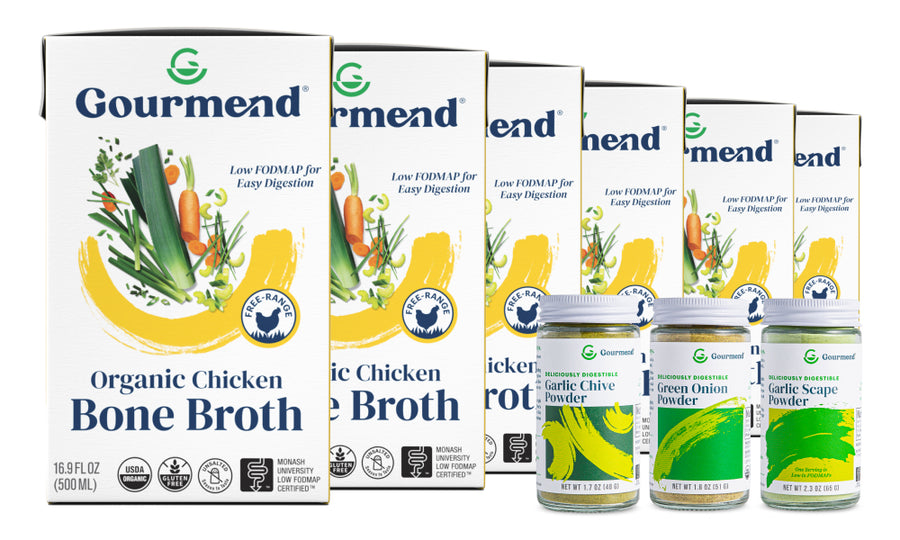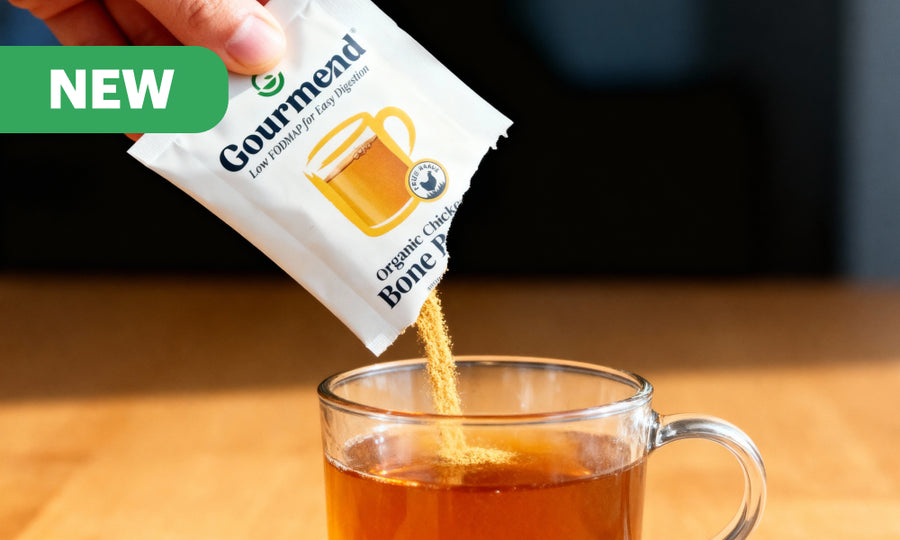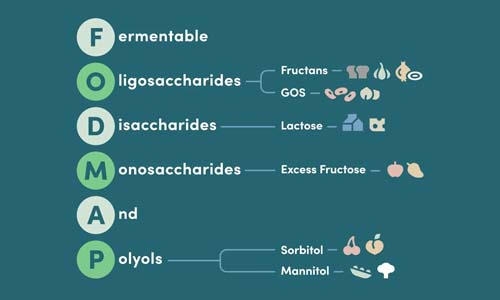Is Soy Sauce Low FODMAP? The Complete Guide 2025

If you're following a low FODMAP diet to manage IBS or digestive sensitivities, you've probably wondered about your favorite condiments. The good news? Soy sauce is low FODMAP and can safely add that savory, umami-rich flavor to your meals without triggering digestive discomfort. For a deeper dive into the science and practical tips, see this detailed guide on soy sauce and the low FODMAP diet.
Key Takeaways
- Soy sauce is generally low FODMAP and safe for most people with IBS when consumed up to 2 tablespoons (42g) per meal.
- Monash University testing supports the low FODMAP status of soy sauce within recommended serving sizes.
- Following a low FODMAP diet does not mean you have to give up flavorful condiments like soy sauce.
- Soy sauce can add savory, umami-rich flavor to meals without causing digestive discomfort for most individuals with IBS.
Table of Contents
At Gourmend Foods, we understand how challenging it can be to navigate condiments and seasonings when you're dealing with gut sensitivities. That's why we've created this comprehensive guide to help you understand exactly how soy sauce fits into your low FODMAP lifestyle—and how to use it confidently in your cooking.
Understanding the Low FODMAP Diet
Before we dive into the specifics of fodmaps soy sauce, let's quickly review what FODMAPs are and why they matter for digestive health. For more foundational information, visit our FODMAP education blog.
What Are FODMAPs?
FODMAPs stands for Fermentable Oligosaccharides, Disaccharides, Monosaccharides, and Polyols—a group of short-chain carbohydrates that can trigger digestive symptoms in sensitive individuals. These compounds are poorly absorbed in the small intestine and can ferment in the gut, leading to bloating, gas, abdominal pain, and changes in bowel movements.
Key Fact: Two-thirds of Americans experience digestive issues, and nearly 1 billion people worldwide live with IBS. The low FODMAP diet has been clinically proven to help manage these symptoms in up to 75% of people with IBS.
Common high FODMAP foods include:
- Wheat and other gluten-containing grains
- Onions and garlic bulbs
- Certain legumes and beans
- Some fruits like apples, pears, and stone fruits
- Dairy products containing lactose
- Artificial sweeteners like sorbitol and mannitol
The low FODMAP diet involves temporarily reducing these trigger foods, then systematically reintroducing them to identify your personal tolerance levels.
The Role of Condiments in Digestive Health
Here's the thing: condiments and seasonings can be sneaky sources of FODMAPs. Many commercial sauces, dressings, and flavor enhancers contain onion powder, garlic powder, or other high FODMAP ingredients that can trigger symptoms even in small amounts.
That's exactly why we developed our line of low FODMAP certified broths and seasonings at Gourmend Foods. We use ingredients like chives and the green parts of scallions instead of onions, delivering incredible flavor without the digestive downside. For more practical tips and recipes, check out our Low FODMAP Recipes blog.
Expert Tip: Always read ingredient labels carefully. Terms like "natural flavors," "spice blends," or "seasoning" can hide FODMAP triggers. Look for products with transparent, clean ingredient lists.
But when it comes to soy sauce low fodmap compatibility, you're in luck. Unlike many other condiments, traditional soy sauce undergoes a fermentation process that actually reduces its FODMAP content, making it a gut-friendly option for most people following the diet. For more on soy and FODMAPs, see this comprehensive overview of soy and the low FODMAP diet.
Important Note: While soy sauce is generally low FODMAP, individual tolerance can vary. Some people with severe IBS may still experience symptoms from certain fermented products. Always start with small amounts and monitor your body's response.
Is Soy Sauce Low FODMAP?
The definitive answer is yes—soy sauce is low FODMAP and safe for most people following the diet when consumed in appropriate serving sizes.
Answering the Core Question
According to extensive testing by Monash University—the leading authority on FODMAP research—regular soy sauce contains no detectable FODMAPs at servings up to 2 tablespoons (42 grams). This makes it one of the more reliable condiment choices for people managing IBS and other digestive sensitivities.
You might be wondering how this is possible, especially since soy sauce is made from soybeans and often wheat—ingredients that can be problematic in other forms. The answer lies in the fermentation process.
Soy Sauce Low FODMAP Status At-a-Glance:
- Serving Size
- Up to 2 tablespoons (42g) per meal
- FODMAP Content
- No detectable FODMAPs in tested servings
- Testing Authority
- Monash University FODMAP research team
- Safety Level
- Generally safe for IBS and digestive sensitivities
How Does Fermentation Affect FODMAP Content?
The fermentation process is the key to understanding why fodmap soy sauce compatibility works so well. During traditional soy sauce production, beneficial bacteria and yeasts break down complex carbohydrates—including many of the oligosaccharides that would normally trigger FODMAP symptoms.
Here's what happens during fermentation:
- Initial breakdown: Enzymes begin breaking down proteins and carbohydrates in the soybeans and wheat
- Bacterial action: Beneficial bacteria consume many of the problematic sugars and oligosaccharides
- Time factor: Longer fermentation periods (sometimes 6 months to 2 years) allow for more complete breakdown of FODMAPs
- Final product: The resulting soy sauce contains primarily amino acids, simple sugars, and flavor compounds that are gentle on digestion
This is similar to how other fermented foods like sourdough bread or aged cheeses can become more digestible than their non-fermented counterparts. The microorganisms essentially "pre-digest" many of the compounds that would otherwise cause digestive distress.
Key Point: Longer fermentation typically results in lower FODMAP content. This is why traditional, naturally fermented soy sauces tend to be better tolerated than quick-processed alternatives.
Are All Soy Sauces the Same for FODMAPs?
Not quite. While most traditional soy sauces are low FODMAP, there are some important distinctions to understand when evaluating soy sauce fodmap compatibility:
- Traditional fermented soy sauce: Made through natural fermentation, lowest FODMAP risk
- Chemically processed soy sauce: Uses acid hydrolysis instead of fermentation, may contain additives
- Flavored or seasoned varieties: May contain added garlic, onion, or other high FODMAP ingredients
- Low-sodium versions: Often still low FODMAP, but check for added ingredients
The ingredient list is your best friend here. Look for soy sauces with simple, clean ingredients: soybeans, wheat (if not gluten-free), salt, and fermentation cultures. Avoid products with added garlic powder, onion powder, or vague terms like "natural flavors."
At Gourmend Foods, we always advocate for transparency in food labeling. That's why all our broths and seasonings list every single ingredient clearly—no hidden additives, no "natural flavors," just real, whole food ingredients you can trust.
Types of Soy Sauce & Low FODMAP Suitability
Understanding the different types of low fodmap soy sauce options helps you make the best choices for your digestive health. Each variety has unique characteristics that can affect both flavor and FODMAP content.
Soy Sauce Types Comparison:
| Type | FODMAP Status | Gluten Content | Best For |
|---|---|---|---|
| Traditional Soy Sauce | Low FODMAP (up to 2 tbsp) | Contains wheat | General cooking, marinades |
| Tamari | Low FODMAP (up to 2 tbsp) | Usually gluten-free | Gluten sensitivities, richer flavor |
| Light Soy Sauce | Low FODMAP (up to 2 tbsp) | Contains wheat | Lower sodium needs |
| Chemically Produced | Check ingredients | Varies | Budget-conscious cooking |
Traditional Soy Sauce
Traditional soy sauce represents the gold standard for soy sauce low fodmap compatibility. Made through a time-honored fermentation process using soybeans, wheat, salt, and starter cultures, this variety undergoes months or even years of natural aging.
- Naturally fermented for 6 months to 2 years
- Complex, well-balanced umami flavor
- Safe up to 2 tablespoons per meal according to Monash testing
- Contains wheat but FODMAPs are broken down during fermentation
The extended fermentation process is what makes traditional soy sauce so digestible. During this time, beneficial microorganisms consume the oligosaccharides and other complex carbohydrates that would normally trigger FODMAP symptoms.
For Gluten Sensitivities: While traditional soy sauce contains wheat, the fermentation process breaks down most gluten proteins. However, those with celiac disease should still choose certified gluten-free options like tamari.
Tamari
Tamari offers an excellent fodmaps soy sauce solution, especially for those avoiding gluten. This Japanese-style soy sauce typically undergoes even longer fermentation than traditional varieties, often resulting in lower FODMAP content and richer flavor. For a delicious example, try our Low FODMAP Miso Salmon recipe featuring tamari.
- Generally gluten-free (always check labels)
- Longer fermentation period reduces FODMAPs further
- Deeper, more complex flavor profile
- Higher protein content than regular soy sauce
- Safe up to 2 tablespoons per serving
You might be wondering why tamari often has a richer taste. The answer lies in its production method—tamari is typically the liquid that pools on top of miso paste during fermentation, concentrating the flavors and beneficial compounds.
Expert Tip: Tamari's robust flavor means you can often use less to achieve the same taste impact, which is great for those who want to stay well within low FODMAP serving limits.
Chemically Produced Soy Sauce
Not all soy sauces are created through traditional fermentation. Some commercial varieties use chemical hydrolysis to speed up production, which can affect both flavor and soy sauce fodmap content.
Here's what happens in chemical production:
- Soybeans are treated with hydrochloric acid to break down proteins
- The mixture is neutralized with sodium carbonate
- Coloring, flavoring, and preservatives are added
- The entire process takes days instead of months
Key Point: Chemically produced soy sauce may contain additional additives that could include FODMAP triggers. Always read ingredient labels carefully and look for products with minimal, recognizable ingredients.
While these products might still be low FODMAP, they often lack the complex flavor development of naturally fermented varieties. At Gourmend Foods, we always advocate for traditional, time-tested production methods that prioritize both flavor and digestive wellness.
Light Soy Sauce
Light soy sauce offers a lower-sodium option while maintaining low fodmap soy sauce status. Despite the name "light," this refers to sodium content rather than color or consistency.
- Reduced sodium content (typically 25-50% less)
- Same fermentation process as regular soy sauce
- Maintains low FODMAP status up to 2 tablespoons
- Slightly milder flavor than full-sodium versions
This option works particularly well for people managing both digestive sensitivities and blood pressure concerns. The fermentation process remains the same, so the FODMAP-reducing benefits are preserved.
Sodium Considerations: Even light soy sauce is relatively high in sodium. If you're watching salt intake, consider using smaller amounts or diluting with low FODMAP broth for marinades and cooking liquids.
Other Low FODMAP Soy-Based Condiment Alternatives

Beyond traditional soy sauce low fodmap options, several other fermented and soy-based condiments can add umami depth to your cooking while remaining gentle on digestion.
Miso Paste
Miso paste represents another excellent fermented option for adding savory complexity to your low FODMAP cooking. Like soy sauce, miso undergoes extensive fermentation that breaks down problematic carbohydrates. For a creative way to use miso, try our Simple Low FODMAP Gourmet Risotto recipe.
- Low FODMAP in servings up to 12 grams (about 2 teaspoons)
- Available in various flavors: white, red, and mixed varieties
- Excellent for broths, marinades, and glazes
- Contains beneficial probiotics from fermentation
White miso tends to be milder and sweeter, while red miso offers deeper, more intense flavors. Both work beautifully in low FODMAP cooking when used within serving limits.
Quick tip: Dissolve miso paste in a small amount of warm water or broth before adding to dishes—this prevents clumping and distributes flavor more evenly.
Worcestershire Sauce
You might be surprised to learn that Worcestershire sauce is generally low FODMAP despite containing ingredients like onions and garlic. The fermentation and aging process breaks down these FODMAP triggers.
- Safe in moderate servings (up to 1 tablespoon)
- Fermentation reduces FODMAP content from onion and garlic
- Adds complex umami and tangy notes
- Works well in marinades and salad dressings
The key here is the extended fermentation period—sometimes up to 18 months—which allows beneficial bacteria to break down the oligosaccharides that would normally cause digestive issues.
Fish Sauce
Fish sauce provides intense umami flavor and is typically low FODMAP, making it an excellent alternative for those seeking fodmap soy sauce variety in their cooking.
- Made from fermented fish and salt
- Naturally low FODMAP in typical cooking amounts
- Adds deep, savory complexity to dishes
- Essential in Southeast Asian cuisine
A little fish sauce goes a long way—often just a teaspoon can transform a dish. Start with small amounts and adjust to taste.
Oyster Sauce
Oyster sauce can be low FODMAP in small servings, but requires more careful attention to portion sizes and ingredients.
Serving Guidelines: Oyster sauce is safe up to 1 tablespoon per serving, but larger amounts may contain enough fructans to trigger symptoms in sensitive individuals.
- Safe up to 1 tablespoon per meal
- Check labels for added garlic or onion
- Provides sweet-savory flavor profile
- Works well in stir-fries and glazes
Always read ingredient labels carefully, as some commercial oyster sauces contain added garlic or onion powder that could increase FODMAP content beyond safe levels.
How to Safely Use Soy Sauce on a Low FODMAP Diet
Understanding proper usage guidelines ensures you can enjoy soy sauce low fodmap benefits while maintaining digestive comfort. Here's everything you need to know about incorporating soy sauce into your low FODMAP lifestyle.
Watch Serving Sizes
The most critical factor in maintaining low fodmap soy sauce safety is sticking to tested serving sizes. Monash University's research establishes clear guidelines that take the guesswork out of portion control.
Safe Soy Sauce Serving Sizes:
- Maximum per meal
- 2 tablespoons (42 grams)
- Recommended starting amount
- 1 tablespoon for sensitive individuals
- Daily limit
- Follow per-meal limits across all meals
- Measurement tip
- Use measuring spoons rather than eyeballing amounts
Here's the thing: it's easy to use more soy sauce than you realize, especially when cooking larger batches or marinating proteins. We recommend measuring your soy sauce rather than pouring directly from the bottle.
Expert Tip: When marinating proteins, remember that much of the marinade gets discarded. You can use up to 2 tablespoons in the marinade itself, knowing that only a portion will actually be consumed with the finished dish.
Read Ingredient Labels
Not all soy sauces are created equal when it comes to fodmaps soy sauce compatibility. Reading labels carefully helps you identify potential FODMAP triggers that could hide in seemingly safe products.
Watch out for these ingredients:
- Garlic powder or granulated garlic: High FODMAP even in small amounts
- Onion powder: Another common FODMAP trigger
- Natural flavors: Vague term that could hide FODMAP ingredients
- High fructose corn syrup: High FODMAP sweetener
- Wheat protein isolate: May contain higher FODMAP levels than fermented wheat
Look for soy sauces with simple, transparent ingredient lists. The best options typically contain just soybeans, wheat (or rice for gluten-free versions), salt, and fermentation cultures.
Key Point: At Gourmend Foods, we believe in complete ingredient transparency. That's why our broths and seasonings list every single ingredient clearly—no "natural flavors," no hidden additives, just real food ingredients you can trust.
Consider Certified Brands
When in doubt, look for products with official low FODMAP certifications. These provide extra assurance that the product has been tested and verified safe for sensitive digestive systems.
Certification programs to look for:
- Monash University Low FODMAP Certified: The gold standard for FODMAP testing
- FODMAP Friendly Certification: Another reputable testing program
- Gluten-free certification: Important if you have celiac disease or gluten sensitivity
- Organic certification: Ensures no synthetic additives that could affect digestion
While certification isn't required for a product to be low FODMAP, it provides additional peace of mind, especially when trying new brands or products.
Individual Tolerance
Even though soy sauce is generally low FODMAP, individual tolerance can vary. Some people with severe IBS or multiple food sensitivities may still react to certain fermented products.
Important Consideration: Start with smaller amounts (1/2 to 1 tablespoon) when trying a new soy sauce, especially if you're in the elimination phase of the low FODMAP diet or have particularly sensitive digestion.
Pay attention to your body's signals:
- Start with small amounts and gradually increase
- Keep a food diary to track any symptoms
- Note that reactions can occur 2-6 hours after eating
- Consider other ingredients in your meal that might contribute to symptoms
Remember, the low FODMAP diet is highly individual. What works perfectly for one person might not work for another, and that's completely normal. The goal is finding your personal tolerance levels while maintaining a varied, enjoyable diet.
Bottom line: Most people following a low FODMAP diet can safely enjoy soy sauce up to 2 tablespoons per meal, but always listen to your body and adjust accordingly.
Low FODMAP Recipes Using Soy Sauce
Now that you know soy sauce low fodmap guidelines, let's put that knowledge to work with delicious, gut-friendly recipes that showcase how versatile this umami-rich condiment can be throughout your day. For more creative ideas, explore our Korean-Inspired Chicken Wings recipe.
Breakfast
Starting your day with low fodmap soy sauce might sound unconventional, but it adds incredible depth to morning proteins and vegetables.
Savory Scrambled Eggs with Soy Sauce
- 6 large eggs, whisked
- 1 tablespoon soy sauce or tamari
- 2 tablespoons chopped chives
- 1 tablespoon sesame oil
- Salt and pepper to taste
Whisk the soy sauce directly into beaten eggs before cooking. The result is incredibly savory scrambled eggs with complex umami notes that pair beautifully with steamed rice or low FODMAP toast.
Expert Tip: Adding soy sauce to eggs before cooking creates a more integrated flavor than drizzling it on afterward. The proteins in the eggs help mellow the saltiness while amplifying the umami.
Lunch
Midday meals benefit enormously from the flavor complexity that fodmaps soy sauce brings to salads, grain bowls, and light proteins.
Chicken Salad with Tamari Vinaigrette
This protein-packed salad gets its flavor from a simple tamari-based dressing that's both satisfying and gentle on digestion.
For the Salad:
- 4 cups mixed greens (spinach, arugula, butter lettuce)
- 8 oz grilled chicken breast, sliced
- 1 cup cooked quinoa, cooled
- 1/2 cup cucumber, diced
- 1/4 cup scallion greens, chopped
For the Tamari Vinaigrette:
- 2 tablespoons tamari
- 2 tablespoons rice vinegar
- 1 tablespoon sesame oil
- 1 teaspoon maple syrup
- 1 teaspoon fresh ginger, grated
Whisk together vinaigrette ingredients and toss with salad components. This makes 2 generous servings, each containing 1 tablespoon of tamari—well within safe limits.
Snacks
Smart snacking with soy sauce fodmap awareness means creating satisfying bites that won't trigger symptoms while keeping you energized between meals.
Low FODMAP Rice Crackers with Soy Sauce Dip
This simple snack combines crunchy rice crackers with a flavorful dipping sauce that satisfies umami cravings.
- 20 plain rice crackers
- 1 tablespoon soy sauce
- 1 tablespoon rice vinegar
- 1/2 teaspoon sesame oil
- Pinch of red pepper flakes (optional)
- 1 teaspoon sesame seeds for garnish
Mix the liquid ingredients to create a balanced dipping sauce. This portion provides exactly 1 tablespoon of soy sauce, leaving room for more at your next meal if desired.
Snacking Strategy: When using soy sauce in snacks, keep track of your daily intake. If you're planning a soy sauce-heavy dinner, consider lighter usage in afternoon snacks.
Dinner
Evening meals offer the perfect opportunity to showcase soy sauce low fodmap versatility in marinades, stir-fries, and glazes that transform simple ingredients into restaurant-quality dishes.
Grilled Salmon with Soy-Maple Glaze
This elegant dinner showcases how soy sauce can enhance rather than overpower delicate fish flavors.
For the Glaze:
- 2 tablespoons soy sauce
- 2 tablespoons pure maple syrup
- 1 tablespoon rice vinegar
- 1 teaspoon fresh ginger, minced
- 1 tablespoon olive oil
For the Salmon:
- 4 salmon fillets (6 oz each)
- Salt and pepper to taste
- 2 tablespoons scallion greens, chopped
- Lemon wedges for serving
- Whisk together glaze ingredients in a small bowl
- Season salmon fillets with salt and pepper
- Grill salmon 4-5 minutes per side, brushing with glaze during last 2 minutes
- Garnish with scallion greens and serve with lemon wedges
This recipe serves 4, with each portion containing 1/2 tablespoon of soy sauce—perfect for those who want to stay well within safe limits.
Quick Vegetable Stir-Fry with Tamari
This versatile stir-fry technique works with any combination of low FODMAP vegetables and can be customized to your preferences.
- 2 tablespoons neutral oil (like grapeseed)
- 2 cups bok choy, chopped
- 1 cup carrots, julienned
- 1 cup red bell pepper, sliced
- 1/4 cup scallion greens, chopped
- 2 tablespoons tamari
- 1 tablespoon sesame oil
- 1 teaspoon fresh ginger, minced
- Cooked rice for serving
Heat oil in a large wok or skillet over high heat. Add vegetables in order of cooking time needed (carrots first, bok choy last). Stir-fry 3-4 minutes until crisp-tender, then add tamari, sesame oil, and ginger. Toss to coat and serve immediately over rice.
Key Point: These recipes demonstrate how low fodmap soy sauce can enhance meals throughout the day without exceeding safe serving limits. Each recipe is designed with portion control in mind, ensuring digestive comfort while maximizing flavor.
Looking for more delicious ideas? Explore our complete Low FODMAP recipe collection and visit the Low FODMAP Learning Hub for step-by-step guidance.
Frequently Asked Questions
Is soy sauce ok for IBS?
Soy sauce can be tricky for people with IBS because it often contains wheat, which has fructans—a type of FODMAP that can trigger symptoms. Some people with IBS may tolerate small amounts, but it depends on individual sensitivity and portion size. Choosing low FODMAP-certified alternatives is safer for managing symptoms.
Is Kikkoman soy sauce low FODMAP?
Kikkoman soy sauce is traditionally brewed with wheat, meaning it contains fructans and is considered high FODMAP in typical servings. Therefore, it’s generally not recommended for a low FODMAP diet if you’re sensitive to wheat-based ingredients.
What sauce can I have on low FODMAP?
On a low FODMAP diet, sauces made without onion, garlic, or wheat are best. Good options include tamari (a wheat-free soy sauce alternative), coconut aminos, and sauces made from low FODMAP ingredients like fresh herbs, lemon juice, and safe spices. Gourmend’s Low FODMAP taco seasoning and broths also add flavor without digestive distress.
Is soy sauce low FODMAP monash?
The Monash University Low FODMAP app classifies regular soy sauce as high FODMAP due to its wheat content. However, tamari, which is a gluten-free soy sauce alternative, is certified low FODMAP by Monash and a safer choice for those managing IBS symptoms.
What food calms an IBS flare-up?
Foods that are gentle on digestion and low in FODMAPs help calm IBS flare-ups. Broths and bone broths like those from Gourmend are excellent because they provide hydration, minerals, and soothing nutrients without irritating the gut. Simple, easy-to-digest foods like cooked rice, bananas, and low FODMAP vegetables can also support digestive comfort during flare-ups.
Can soy sauce make you gassy?
Yes, soy sauce can cause gas for some people because it often contains wheat, which has fermentable carbohydrates that feed gut bacteria and produce gas. Those sensitive to fructans or gluten may experience bloating or discomfort after consuming regular soy sauce.







